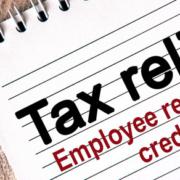Is your nonprofit’s tap running dry?
The novel coronavirus (COVID-19) crisis has put enormous financial stress on many not-for-profits — whether they’re temporarily shut down or actively fighting the pandemic. If cash flow has dried up, your organization may need to do more than trim expenses. Here’s how to assess your financial condition and take appropriate action.
Put your board in charge
Ask your board of directors to lead your review and retrenchment efforts. In addition to having oversight experience and financial expertise, board members have a passion for your organization and will do whatever they can to assist. They may already have employer backing for your nonprofit, and those companies may be willing to step up their financial support. Or board members may be able to tap their social networks.
The first order of business should be to review programs relative to your nonprofit’s mission. If you identify one that isn’t critical to your mission and is a drain on cash balances and staff resources, consider cutting it. Terminating a non-mission-critical program frees up funds for other initiatives or administrative necessities. If you can redirect clients to similar programs offered by other organizations, such changes can be made without a break in service.
Your board may also be able to liberate cash from your investment portfolio. Your nonprofit may have investments or idle assets that aren’t generating operating income — for example, donated real estate, collections and other nonmarketable holdings. Divesting these possessions can raise critical operating funds.
Look to your endowment
Another potential source of operating funds is your organization’s permanently restricted endowment funds. Under the Uniform Prudent Management of Institutional Funds Act (UPMIFA), you may be able to spend what was once considered the untouchable original principal (or historical balance) of funds.
Access generally is available when the donor of the original gift is silent about restrictions or hasn’t specified that UPMIFA provisions don’t apply. In some cases, an original condition or restriction may no longer be practicable or possible to achieve. Your nonprofit should consult an attorney to learn whether this is an option.
If UPMIFA provisions don’t open up a source of funds, there’s another potential route — approach the original donor. Your organization can ask the donor to lift all or some of the spending restrictions so you may use a portion of the funds for operating costs.
We can help
These are only a few possible solutions for struggling nonprofits. If you know your nonprofit is in trouble, but don’t know how to start fixing it, contact us. We can work with your board to assess your situation and determine the best way to move forward.
© 2020














